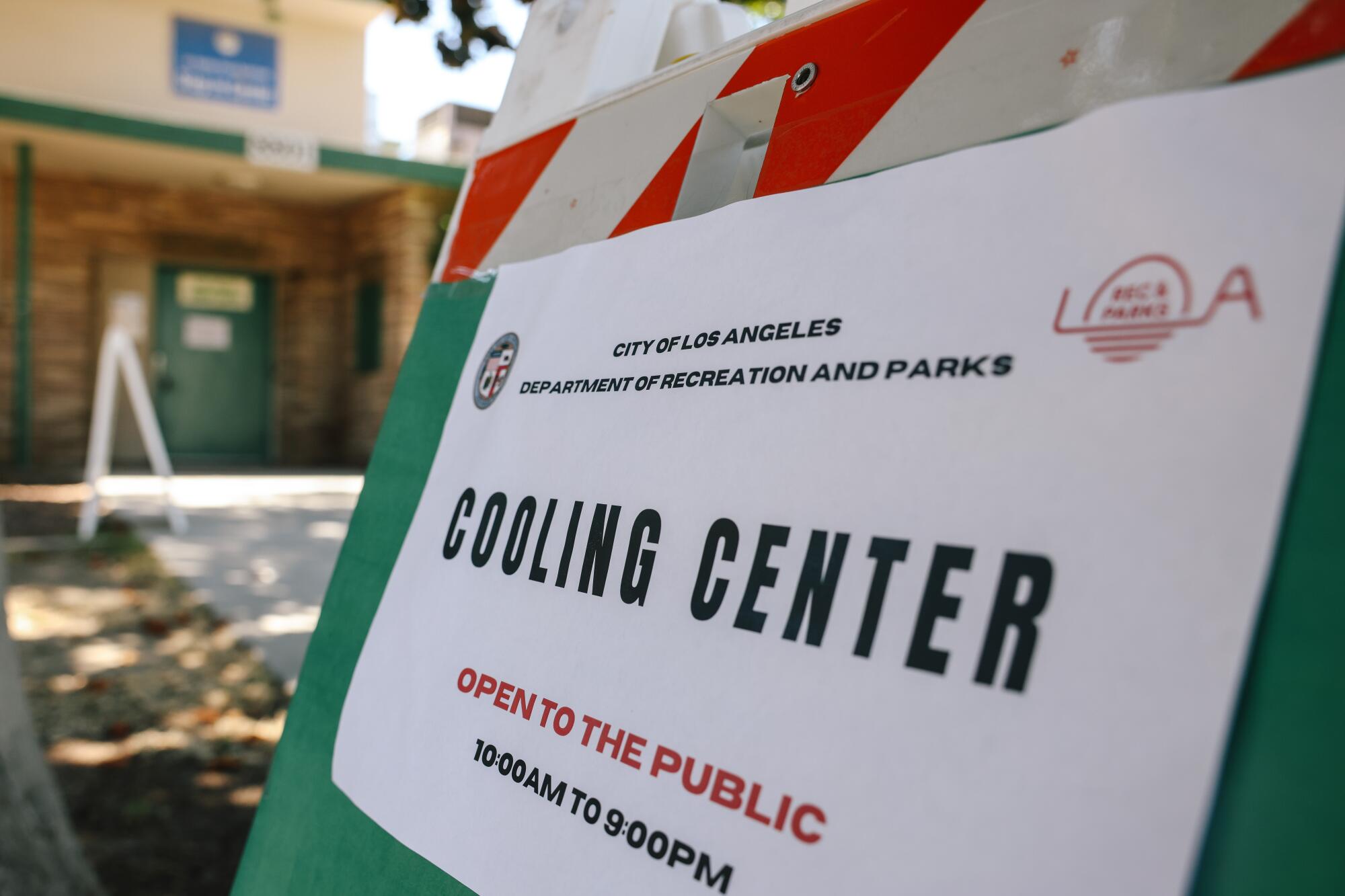
- Share via
In a troubling milestone, June marked Earth’s 12th consecutive month of global warming at or above 1.5 degrees Celsius — the internationally accepted threshold for avoiding the worst effects of climate change.
A stifling month marked by heat waves and heat deaths, June was also about a quarter of a degree warmer than the previous hottest June on record in 2023, according to a report from the European Union’s Copernicus Climate Change Service. It is the 13th straight month to break its own monthly heat record.
Aggressive and impactful reporting on climate change, the environment, health and science.
The planet’s persistent soaring temperature is “more than a statistical oddity and it highlights a large and continuing shift in our climate,” Copernicus’ director Carlo Buontempo said in a statement.
“Even if this specific streak of extremes ends at some point, we are bound to see new records being broken as the climate continues to warm,” he said. “This is inevitable, unless we stop adding [greenhouse gases] into the atmosphere and the oceans.”
The 1.5-degree Celsius threshold, about 2.7 degrees Fahrenheit, was established under the 2015 Paris agreement. Under that accord, the United States and nearly 200 other nations agreed to limit the global average temperature increase to a maximum of 2 degrees Celsius over pre-industrial levels — and preferably below 1.5 degrees Celsius — in order to reduce the worst effects of climate change.
The pre-industrial period refers to an era before humans began meaningfully altering the planet’s climate through fossil fuels and other heat trapping emissions, and is generally measured using temperature data from between 1850 and 1900. According to Copernicus, June’s global average temperature of 16.66 degrees Celsius (61.98 degrees Fahrenheit) was precisely 1.5 degrees Celsius above the estimated preindustrial average.
The unprecedented year-long stretch is “very noteworthy and disturbing,” said Brenda Ekwurzel, a senior climate scientist with the Union of Concerned Scientists, a national nonprofit organization.
However, surpassing 1.5 degrees Celsius for one year does not necessarily mean humanity has failed to reach its goal, as the Intergovernmental Panel on Climate Change has not officially defined how many years of warming over 1.5 degrees Celsius are needed in order for the threshold to be breached.
It is a subject of much scientific discussion, Ekwurzel said, but many experts have suggested that the limit should refer to a period of at least 10 years of warming at that temperature.
“It is worth noting for humanity — for all life on the planet — that we have been hovering around what the Paris agreement set as a threshold, and this may be the first year of that 10-year average,” she said. “It means that we have already logged one year in that logbook.”
Every bit of planetary warming will have impacts beyond those already occurring, including biodiversity loss, longer heat waves and extreme rainfall.
The benchmark is not merely symbolic. A 2018 special report from the IPCC spelled out a worrisome future based on 1.5 degrees Celsius of warming, with various emissions scenarios leading to deadlier heat waves, droughts, floods, famine, ecosystem destruction, and public unrest and political destabilization, among other outcomes.
Already, rising global temperatures have contributed to surging numbers of heat-related illnesses and deaths, including 1,300 deaths during this year’s Hajj pilgrimage in Saudi Arabia. Last year, a record 31-day heat streak in Phoenix contributed to an estimated 645 deaths, while a 2022 heat wave in California killed an estimated 395 people.
“We still have not changed our cultural patterns to adjust to this climate change reality,” Ekwurzel said. “The timing of when we have sporting events, the timing of when we do certain cultural activities, were based on ancient temperature.”
It’s not only land surfaces that are simmering. The non-polar sea surface temperature in June was 69.53 degrees, the highest value on record for the month, Copernicus said. It was the fifteenth month in a row that the sea surface temperature has been the warmest on record.
The elevated temperatures occurred despite a waning El Niño — the climate pattern in the tropical Pacific associated with warming global temperatures. Scientists say El Niño contributed to the record planetary heat in recent months, and had hoped its dissipation would deliver a bit of cooling.
That may still happen in the months ahead, particularly as a La Niña pattern develops later this year, but the persistent heat indicates a “kind of pulling away from the natural cycles,” Ekwurzel said.
“Once you warm the ocean up, it’s harder to cool it down because it has such high heat capacity,” she said. She added that warm ocean waters can be dangerous for marine life and for people on land, as it can lead to more powerful winds, storms and waves.
The Atlantic Ocean is expected to experience an active hurricane season this year. Hurricane Beryl in the Caribbean has already become the earliest storm on record to reach Category 5.
Global average temperatures and CO₂ levels continue to soar. May was Earth’s 12th consecutive hottest month on record, officials announced this week.
Seasonal forecasts indicate that high temperatures will persist in the months ahead. Nearly all of the U.S. is projected to experience warmer-than-average temperatures in July, August and September, according to the National Oceanic and Atmospheric Administration, with the highest likelihood of above-normal conditions in the Four Corners region and the far Southeast.
A dangerous heat wave that began in California last week delivered triple-digit temperatures across the state and contributed to a rash of wildfire ignitions.
High temperatures have also prompted a federal response. The U.S. Department of Labor’s Occupational Safety and Health Administration last week advanced a proposal to establish heat standards for 35 million indoor and outdoor workers, following California’s lead.
The Federal Emergency Management Agency, too, is facing mounting pressure to broaden its definition of “major disasters” to include extreme heat, which advocates say will open up new avenues of funding for cities and states struggling to deal with the rising threat.
Ekwurzel said it’s not too late for humanity to change course and avoid the 1.5-degree Celsius limit. However, urgent action and emissions reductions will be required.
“The Earth and ocean and atmosphere are telling us that we have to act really fast if we have any chance, and many, many, many people are losing hope,” she said. “We’d better be adapting to this 1.5-C world. Many people say this is the coolest decade, probably, of the 21st century.”











